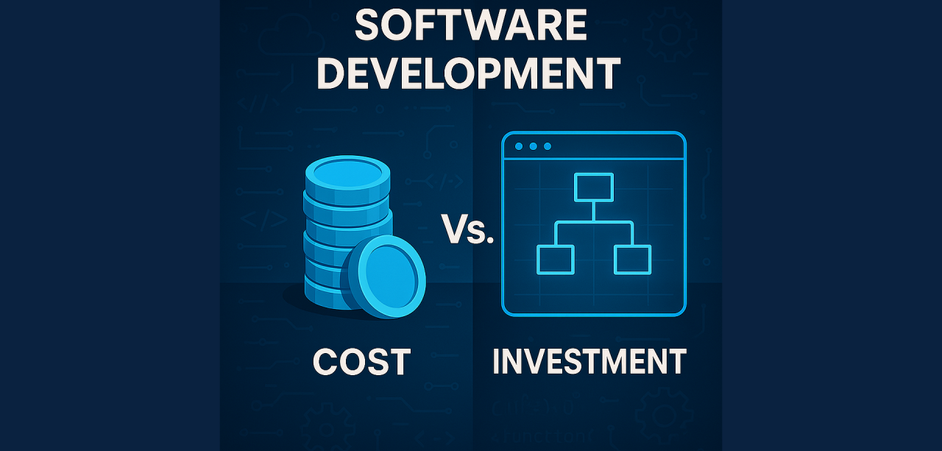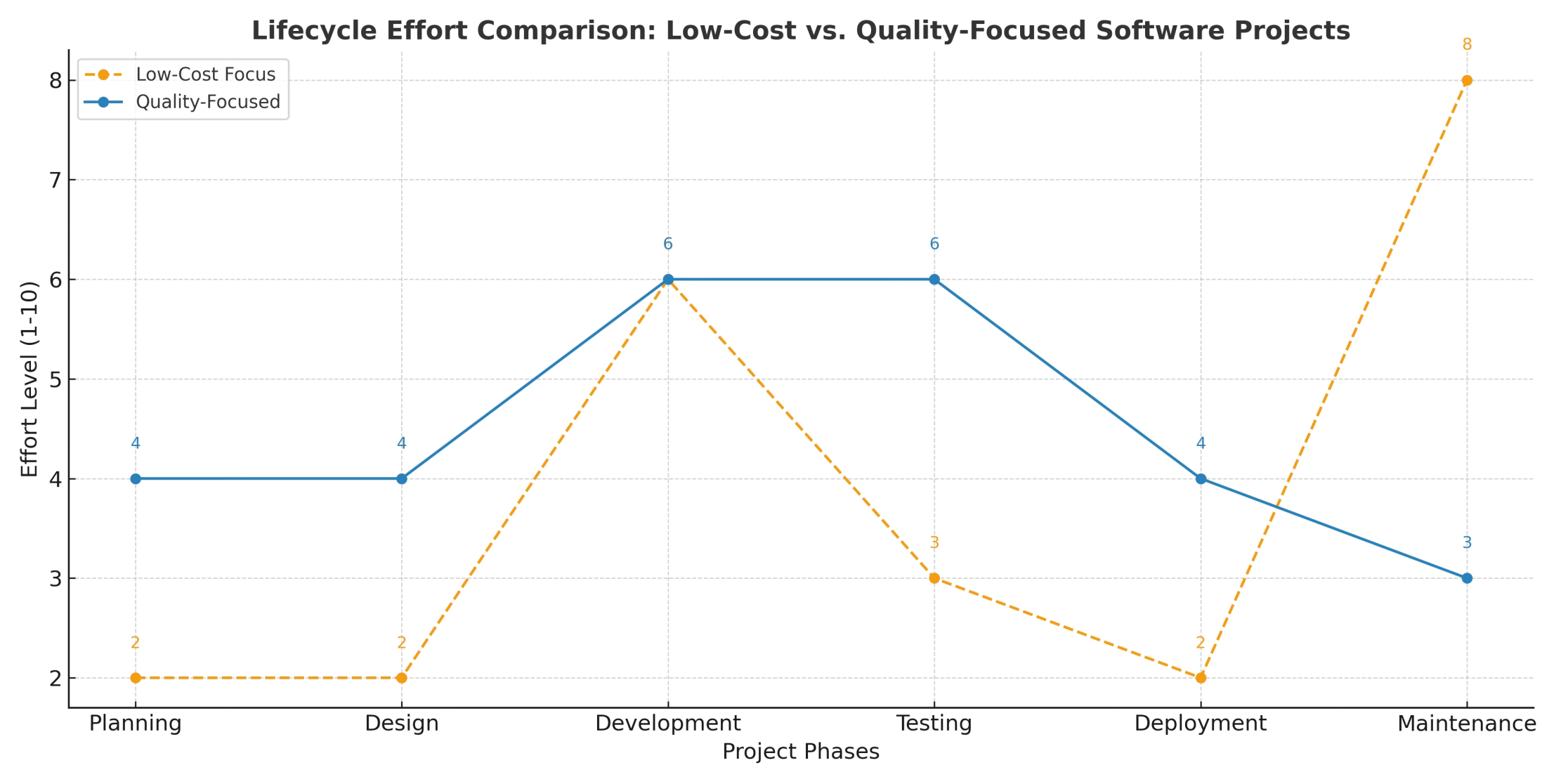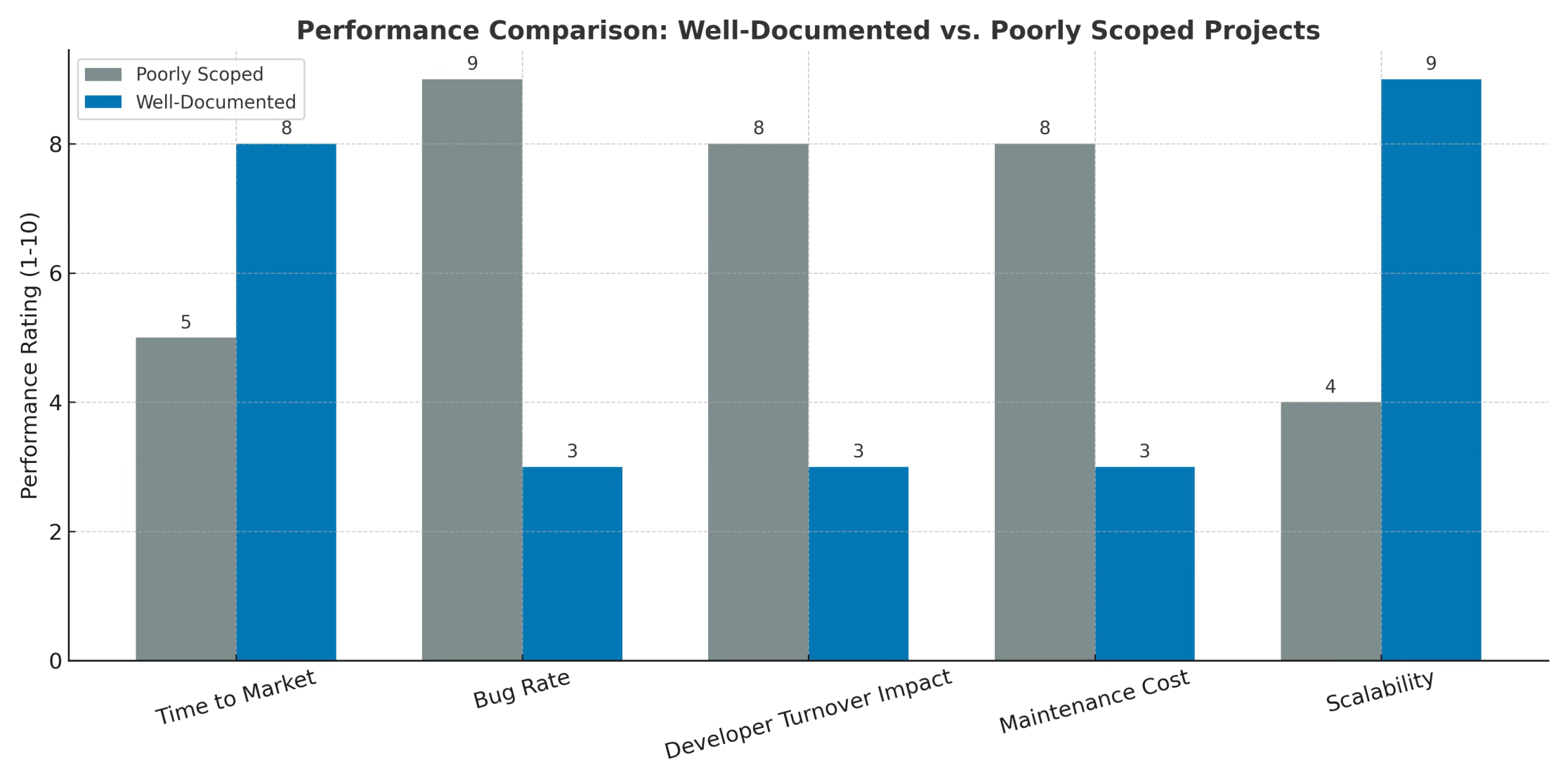
Written by Anas Homaidani
KUWAITNET's Chief Commercial Officer - CCO
There’s a crucial distinction I always try to highlight:
As a Chief Commercial Officer working with clients across various industries, I’ve seen a recurring theme in early-stage project conversations: a heavy focus on cost. It’s a natural instinct—everyone wants to be efficient with their budgets. But over the years, I’ve learned that what often starts as a “cost-saving” decision can turn into a long-term expense if not approached correctly.
When software development is approached purely from a cost perspective—going with the lowest bidder, rushing the scope, or cutting corners on documentation—it often leads to problems:
Poorly structured code that’s difficult to maintain
Lack of scalability when the business grows
Delays and bugs that hurt your brand’s credibility
Dependency on individuals instead of systems
In contrast, choosing a professional team that prioritizes best practices—architecture, documentation, QA, and knowledge continuity—may seem more expensive up front, but in truth, it’s an investment that protects your business.

Here’s a visual comparison of the lifecycle effort for low-cost versus quality-focused software projects:
Well-documented, clean, and scalable code is not just a deliverable—it’s an asset. It gives you the flexibility to grow, the confidence to pivot, and the security to onboard new developers without losing momentum.
I’ve witnessed projects continue seamlessly despite turnover in developers or even project managers—not because of luck, but because the right structure was in place from the start. That’s what investing in quality buys you: continuity.
Even with MVPs or phase-one projects, the temptation is to “just get it done.” But this is the foundation of everything that follows. Choosing experienced professionals—who can build with a long-term vision in mind—can mean the difference between a prototype that becomes a product and one that needs to be scrapped.
Freelancers can be excellent in the right contexts, but in mission-critical projects where continuity, collaboration, and future-proofing matter, a structured team is often the better bet.
I often tell clients: You’re not just paying for code—you’re investing in reliability, clarity, and growth readiness. Choosing quality doesn’t just reduce future costs; it also:
Improves your time-to-market
Ensures better security and compliance
Builds stakeholder confidence
Supports smoother handovers in case of team changes

In today’s market, where technology moves fast and competition is fierce, businesses can’t afford to think short-term. If you see software development as an investment—not just a cost—you’ll make decisions today that compound in value tomorrow.
Let’s stop asking: “How much does it cost?”
And start asking: “What value will this bring—and is it sustainable?”
KUWAITNET, MVPstrategy, SoftwareDevelopment, businesscontinuity, devopsbestpractices, investmentinsoftware, qualitycode, softwarearchitecture, techROI,